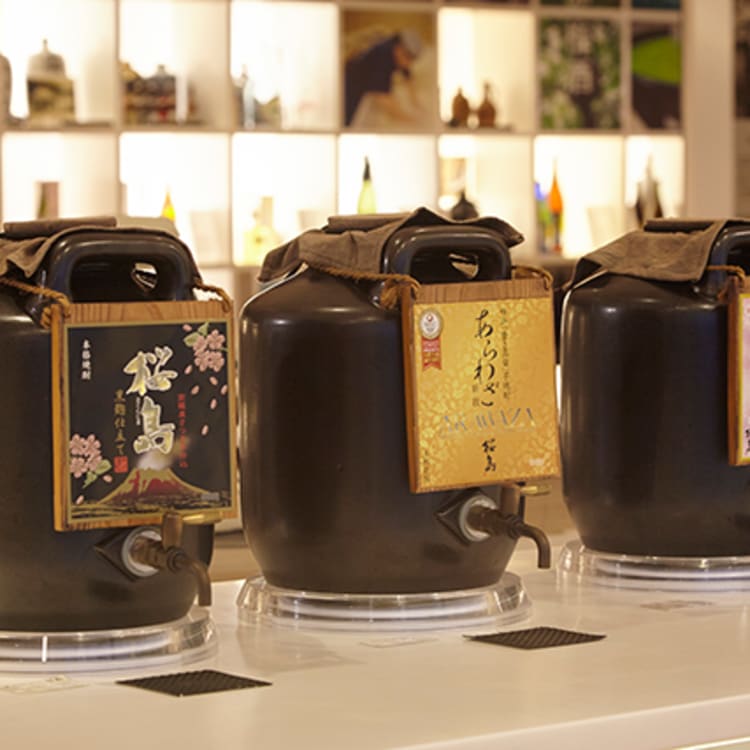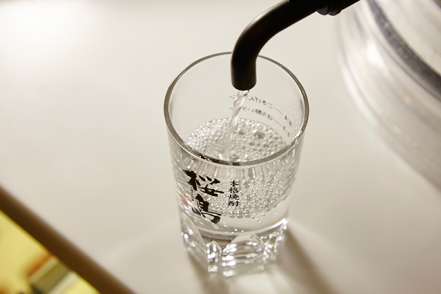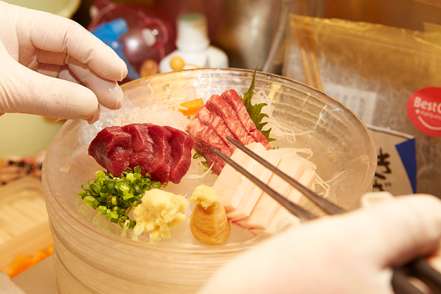
GUIDE Kyushu’s Shochu Culture by JNTO on 10 September 2018
Winter in Japan is often cold enough to snow, making it an ideal season for brewing sake since sake yeast ferments in low temperatures. However, due to its southerly location, Kyushu doesn’t generally experience cold winters so it wasn’t suited for sake production in the days before refrigeration; in its place, shochu became the spirit of choice since the warmer winter has no effect on distillation.
Today, Kyushu is known as the “kingdom of shochu” because it’s made all over the island; however, there are only three places of production that come with an appellation: Iki, Kuma, and Satsuma, similar to how “scotch” can only come from Scotland and “champagne” can only come from France. These three areas produce three main types of shochu: barley (Iki), rice (Kuma), and sweet potato (Satsuma).
Kagoshima and imo-jochu
By far, the most popular type of shochu is imo-jochu, made with imo (sweet potato) produced mainly in Kagoshima Prefecture, which consumes the most shochu annually out of any prefecture in Japan. The sweet potatoes are mainly grown in the fertile Shirasu plateau. Shochu produced here is called Satsuma Shochu, the historical name for Kagoshima.
There are 113 shochu distilleries in Kagoshima, but Meijigura on Satsuma Peninsula is particularly famous, especially for its Satsuma Shiranami. Operating since the Meiji period, its clay pots, wooden barrels, as well as distillation cellar remain unchanged since its establishment. Meijigura's production cycle usually runs from August until May, when visitors can observe the shochu-making process and sample some shochu along with local foods. In addition to Meijigura, there are 63 other distilleries that are open to visitors.
If you’re in Kagoshima City, the Kagoshima Shochu Street festival happens from 1-3 November every year, where you can sample Kagoshima’s specialties along with shochu from all over the prefecture.

Kumamoto’s rice shochu
Kuma Shochu originates in Kumamoto Prefecture, specifically in the Hitoyoshi Plateau of the Kuma district, and has been in production here since the 16th century. Kuma Shochu, which is clean with a hint of sweetness, is made with local rice, hence its name kome-shochu. The main production area lies along the Kuma River, the clear stream of which feeds the verdant paddy fields of one of Kyushu’s foremost rice-growing areas.
There are 28 distilleries that carry the Kuma Shochu appellation, each with their own distinct distillation flavours including mild, rich, and aged which is produced in different barrels. You can go on a distillery tour of the area; not to be missed are Sengetsu near Hitoyoshi Castle, Shiro with its amazing views, and the Kuma Shochu Museum near Hitoyoshi Station – all of these offer free shochu tasting.
Nagasaki and Iki Shochu
Iki Island in Nagasaki is considered the birthplace of mugi (barley) shochu in Japan, which has been produced here since the Edo period, with 55 distilleries established since 1899. However, only seven shochu distilleries remain today, including Ikinokura Distillery and Omoya Shuzo, the only tezukuri (handmade) distillery left on the island.
Iki Shochu, or iki-jochu, is traditionally made with barley and local groundwater, and has a very diverse range of flavours depending on the distillation methods, yeasts, and aging techniques. In general, it has a milder taste than other shochu types. There are two types of mugi shochu: clear, and amber which is aged in oak barrels to impart a whisky-like flavour.
Food pairing with shochu
Shochu can be drunk in a few ways – with ice, with water and ice, or with warm water – and it varies depending on the type of shochu and the region you drink it in. A huge variety of shochu can be sampled at izakayas which can be found all over Kyushu.
In Kagoshima, it is common to enjoy imo-jochu with hot water at a 60:40 ratio which enhances the sweetness and aroma of the sweet potato. The local way is to dilute it with water and heat it in an earthen pot called the kurojoka. The sweet aroma of imo-jochu goes well with fatty dishes or fried foods such as tender pork and one of Kagoshima’s specialties, satsuma-age – a fried fish cake filled with various ingredients. Kumasotei is a good place to sample local cuisine with shochu.
In the Kuma region, the local way of drinking is to heat the shochu in a gala – resembling a teapot with a long, thin spout – and pour it into choku cups or solagyu cups which have a pointed base, meaning you have to finish the cup before you put it on a table.
Throughout Kumamoto, people tend to pair kome-shochu, which has umami characteristics, with basashi (horse sashimi), a local specialty. You can try basashi at Suganoya, where you can sample this delicacy with shochu. Kome-shochu also goes well with other delicate flavours like sushi, sashimi, and tofu, as well as dishes made from rice.
Because of its aromatic flavour and a wide variety of flavour profiles, mugi shochu goes well with almost any dish. It can be paired with grilled white fish, as well as any food that’s not oily. On Iki Island, you can sample fresh squid and buri (yellowtail) in autumn and winter.

Getting there
Meijigura, Kagoshima
Kagoshima is accessible by train from Fukuoka’s Hakata Station (1.5 hours). From Kagoshima Chuo Station, take the bus bound for Kawanabe/Makurazaki (1h 40m) which terminates at Makurazaki bus station. Meijigura is a 10-minute taxi ride from there.
Date: Open Everyday (except December 31 to January 1)
Hours: 9am to 4pm
Admission: Free
Iki Island, Nagasaki
Iki Island is accessible from Hakata Port in Fukuoka via jetfoil (60 minutes) and ferry (150 minutes), as well as by air from Nagasaki Airport (50 minutes).
Hitoyoshi, Kumamoto
All breweries in the Hitoyoshi Plateau lie along the Kuma River, which is accessible from Hitoyoshi City. From Fukuoka’s Hakata Station, it’s a 3-hour train ride to Hitoyoshi Station.
















































